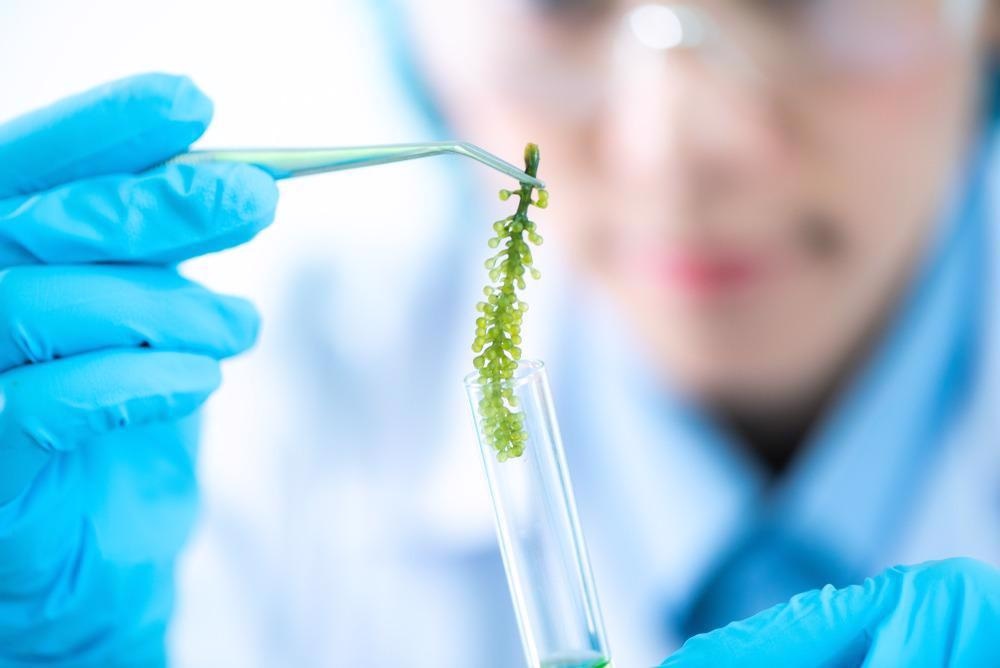Associate Professor Akshat Tanksale at Monash University speaks to AZoCleantech about his research on how microalgae could have significant benefits when applied to the hydrogen production industry.
What drove your research into microalgae as a clean energy source to create hydrogen and methane?
Microalgae as a feedstock is attractive due to its high carbon dioxide fixation efficiency, growth rate, photosynthetic efficiency, ability to grow in brackish water – such as rivers and lakes – and the ability to cultivate it on land that is not suitable for agriculture.
What makes microalgae a suitable resource that could revolutionize hydrogen production?
Unlike agriculture or forestry-based biomass, microalgae is more suitable for industrial-scale production for energy generation. It is easier to convert into hydrogen since it is made of a simpler cellular structure.
The current best-practice for hydrogen production is steam reforming of methane. What techniques have you used in your research and how do they compare to steam reforming?
We use a method that is similar to steam reforming. In our method, the microalgae first goes through fast pyrolysis (thermal decomposition) to produce volatile bio-oil, which is immediately converted into hydrogen by steam reforming. There are dozens of chemical reactions in our process compared to only a couple of reactions in the steam reforming of methane. The beauty of our method is that all the reactions take place in a matter of microseconds. This is achieved by a novel catalyst that was designed specifically for microalgae conversion.
How could this research drive cultivation of microalgae in rural communities? What benefits will this have?
This research could provide high revenue for microalgae growers. Until now, microalgae cultivation has been limited for energy products since the main route for conversion has been biodiesel production, which has low value and market acceptability. However, hydrogen is widely considered as the future fuel for large-scale commercial operations.

Using microalgae to produce hydrogen emits 36% less greenhouse gas emissions than current methods, with the possibility of this figure increasing to 87% with the incorporation of additional renewable energy processes. Image Credit: Chokniti Khongchum/Shutterstock.com
Would the use of microalgae to make hydrogen be a costly process? Could this technology be adopted on a much larger scale?
Our techno-economic model suggests that at $10/kg compressed hydrogen (at 700 bar pressure), the payback period for hydrogen production at a scale of ~30 tons per day is only 3.78 years with a 22% return on investment. Therefore, it is viable for a large-scale operation.
What potential positive environmental benefits can be gained with using microalgae to produce hydrogen?
Hydrogen production from microalgae using Reactive Flash Volatilisation produces 36% less greenhouse gas emissions compared to the steam reforming of methane gas – the current best practice for hydrogen production. With additional renewable energy processes such as hydroelectricity being integrated into our hydrogen production process, carbon emissions could drop by as much as 87%.
Why is this research important for the wider hydrogen production industry and in responding to the current climate change concerns?
Hydrogen production via renewable resources is essential to solve the energy crisis and bring down the global emissions from fossil fuels. Currently, a vast majority of hydrogen comes from fossil fuels, which causes carbon dioxide emissions, leading to climate change. Hydrogen production via microalgae is potentially carbon neutral.
What challenges have you faced in your research and what challenges are you likely to face if this technology is rolled out within the industry? How will these issues be overcome?
One of the challenges that must be overcome is the scaleup and commercialization of microalgae production processes. Photobioreactor advancements are being made to produce microalgae in high concentration and low footprint. However, they are not yet at a stage where they can be applied to energy applications due to the sheer size of energy demand.
Why is hydrogen an important future source of energy? How does this research project fit into this?
Hydrogen is a clean-burning fuel that only produces water vapor as a byproduct of converting hydrogen into energy. Microalgae use this water (and CO2 from the atmosphere) for their growth. Therefore, this process closes the carbon and hydrogen loop and is therefore highly sustainable.
What are the next steps for the project?
The next steps in the project are to test this process at a pilot scale and conduct long-term studies on the yield of hydrogen from microalgae and link it with renewable electricity to power the compression of hydrogen for storage.
Where can readers find more information?
https://www.sciencedirect.com/science/article/abs/pii/S0926337319303133
https://www.sciencedirect.com/science/article/abs/pii/S0959652620337719
https://www.sciencedirect.com/science/article/abs/pii/S0926337316300418
About Akshat Tanskale
 Associate Professor Akshat Tanskale is the group leader of Catalysis for Green Chemical group at the Department of Chemical Engineering, Monash University. He completed a Bachelor of Chemical Engineering at the National Institute of Technology (Raipur, 2001) and then decided to follow an academic career. He completed a PhD in Hydrogen Production from Biomass Feedstock at the University of Queensland (UQ) in 2008. During that time, he examined nanomaterials and chemical reaction engineering. He has been working on hydrogen energy since then. A/Prof Tanksale did a postdoc at UQ exploring biomass conversion to liquid fuels and chemicals, and hydrogen storage.
Associate Professor Akshat Tanskale is the group leader of Catalysis for Green Chemical group at the Department of Chemical Engineering, Monash University. He completed a Bachelor of Chemical Engineering at the National Institute of Technology (Raipur, 2001) and then decided to follow an academic career. He completed a PhD in Hydrogen Production from Biomass Feedstock at the University of Queensland (UQ) in 2008. During that time, he examined nanomaterials and chemical reaction engineering. He has been working on hydrogen energy since then. A/Prof Tanksale did a postdoc at UQ exploring biomass conversion to liquid fuels and chemicals, and hydrogen storage.
A/Prof Tanksale believes that innovating new processes and designing novel heterogeneous catalysts at the nanoscale is the key to developing low-carbon alternative fuels and chemicals. He joined Monash University as a lecturer in 2011 to start his own research group and started a new direction of research in the field of syngas and CO2 conversion, in addition to biomass conversion.
The novel catalysts developed in his group enable selective conversion of CO2 and biomass, providing faster reaction kinetics and higher yield of the products. He has recently been appointed the Theme Leader for the Carbon Capture, Conversion and Utilisation Theme of the Woodside Monash Energy Partnership. Woodside Energy and Monash University are jointly investing more than $40 million over seven years towards this partnership with three broad themes – 1) New Energy Technologies, 2) Carbon Capture, Conversion and Utilisation, and 3) Energy Leadership.
A/Prof Tanksale is leading several projects focusing on hydrogen production and using CO2 as a feedstock for making chemicals and fuels, thereby reducing the net CO2 emissions in the atmosphere.
Current projects in the research group:
- Hydrogen production from biomass (wood, wheat straw, bagasse, algae)
- Production of formaldehyde and derivatives from direct hydrogenation of CO and CO2
- Catalytic conversion of waste biomass into value-added chemicals such as furfural, levulinic acid, hydroxymethyl furfural
- Depolymerisation of waste super absorbent polymers into monomers/oligomers for the circular economy
- Direct CO2 hydrogenation into gaseous and liquid fuels
- Dry reforming of methane in an inductively heated reactor
Disclaimer: The views expressed here are those of the interviewee and do not necessarily represent the views of AZoM.com Limited (T/A) AZoNetwork, the owner and operator of this website. This disclaimer forms part of the Terms and Conditions of use of this website.